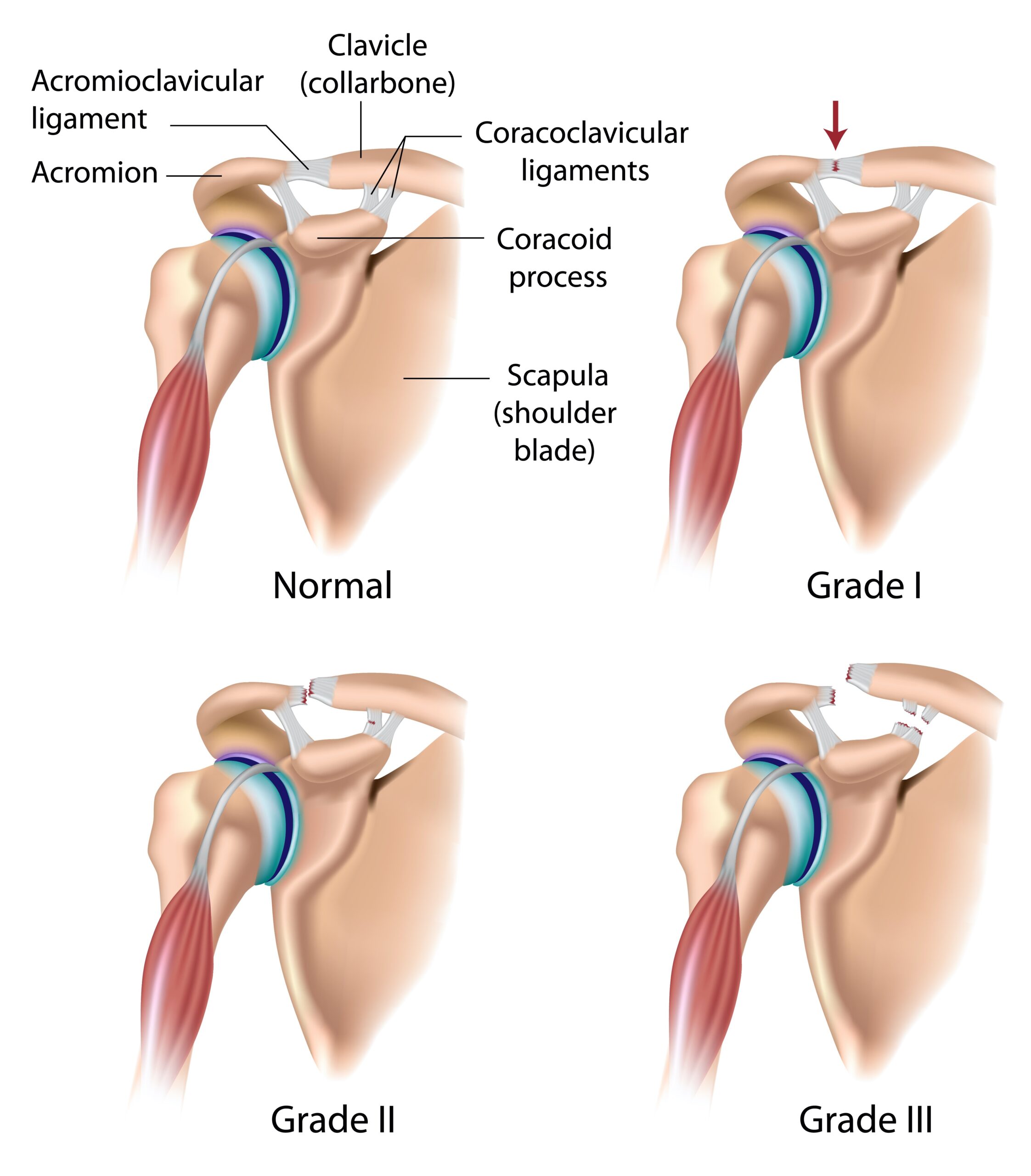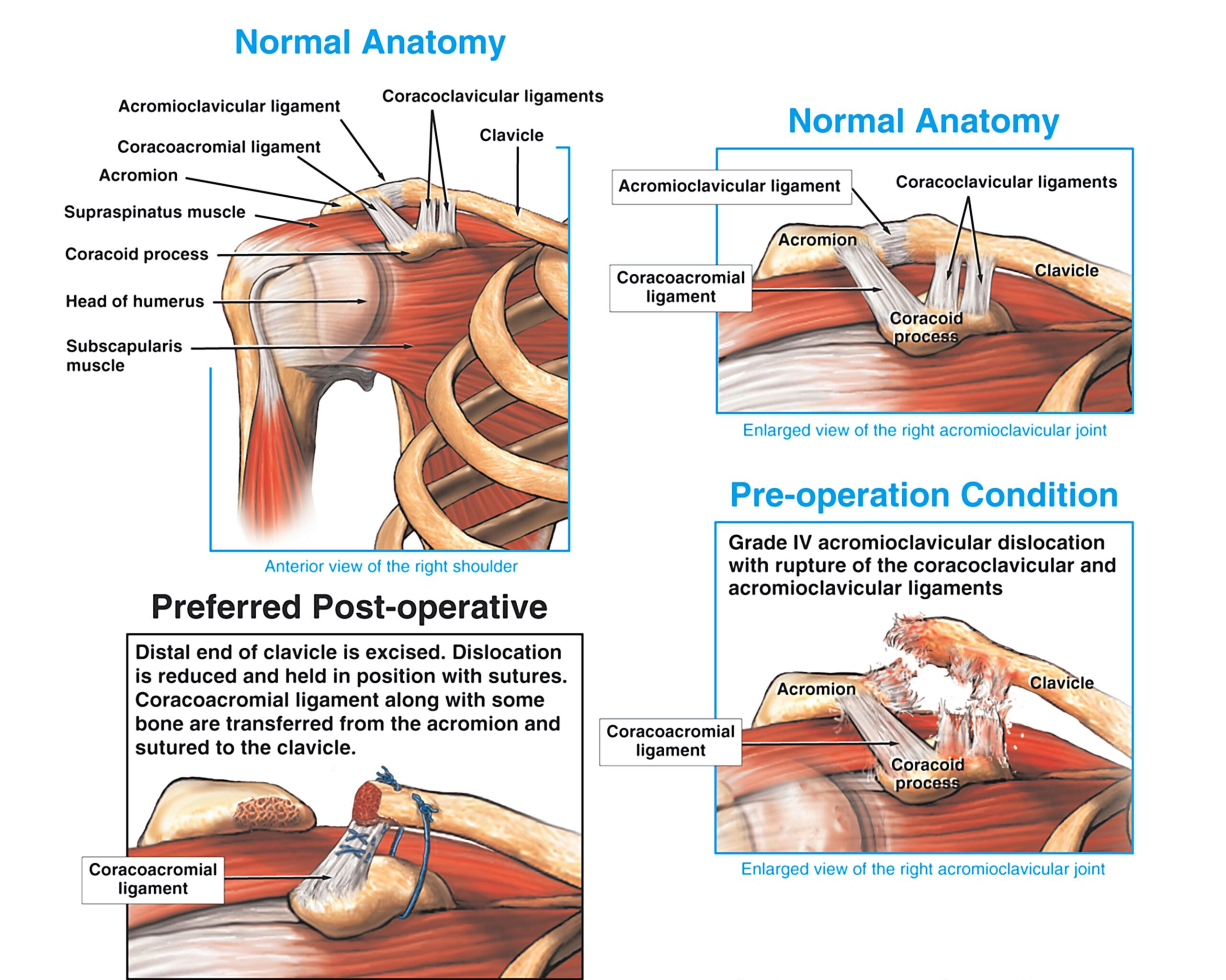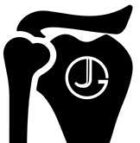If you experience pain on the top of your shoulder, it may be coming from the acromioclavicular joint (‘ACJ’). This is a joint made up of the meeting of two bones – the collarbone (clavicle) and the acromion, which is part of to the shoulder blade.
The two main problems with the ACJ are usually arthritis or instability. If we do a lot of overhead activity, over many years this can lead to wear and tear arthritis in the joint. It’s natural for a joint to wear over the years but if the joint becomes very painful it may make activities, such as playing tennis or even lifting your arms above your head uncomfortable.
Sometimes an injury will flare up a previously pain-free arthritic joint and occasionally if you fall heavily on your shoulder you can tear the ligaments around the ACJ. If this happens you can develop a painful lump in the area around the joint and may notice that the end of your collarbone is more prominent or even unstable.

ACJ pain can be quite debilitating if you have an occupation that requires you to work with your hands overhead.
You may find that there’s a bump on the top of your shoulder that clicks and can be irritable.
Sometimes getting comfortable at night-time can be tricky, or you may find that bringing your arm across your chest causes pain. Some patients also feel pain with certain exercises, such as press-ups.
Diagram of a painful arthritic ACJ

The treatments available to you will depend on what exactly is going on in the joint. After I have had a chat with you and examined your shoulder, I may then arrange for you have additional investigations, such as an X-ray or MRI scan so we can clearly see what is causing the problem. When symptoms are mild, then you’re likely to benefit from physiotherapy and an injection (corticosteroid) to settle the joint.
Below is a diagram of the grades of ACJ injury and instability

If the shoulder becomes very painful, and it doesn’t settle with injections and therapy it may be time to consider surgery.
The procedure that we decide on depends on whether you have painful wear and tear of the joint or painful instability of the joint. If you have painful wear and tear the operation may be in the form of an arthroscopic procedure (keyhole surgery), which is carried out under a general anaesthetic, and it’s a day-case procedure. This is to smooth the irregular painful joint surfaces and is done through very small incisions.
Sometimes I may recommend an ‘open’ surgical procedure, which is done through a larger incision as it may give an even better outcome in reducing pain from the joint.
Diagram of an open excision of a painful arthritic ACJ

After surgery, you may need to use a sling for a few days to rest the shoulder if it’s uncomfortable. The recovery is relatively straightforward after this kind of surgery, because it doesn’t destabilise the joint or cut tendons. Leisure activities such as golf can usually begin at 6 weeks and more strenuous activities such as front crawl swimming can begin at 3 months.
Physiotherapy or osteopathy will help you to recover from the surgery and restore the range of movement; you may need to take some painkillers in the first few weeks, particularly to get comfortable at night-time. The majority of my patients are approximately 80% better by 3 months after surgery and you can expect to continue to improve for up to a year following the procedure.
If you have instability of the acromioclavicular joint, I would usually recommend an open operation to pass an artificial ligament around the collar bone to stabilize it to the shoulder blade. The recovery from this operation would also be relatively straightforward and I would anticipate that in most cases you would be returning to sports and normal activities by 3 months if everything went well.
Below is a diagram of ACJ instability and a simplified version of a surgical repair

